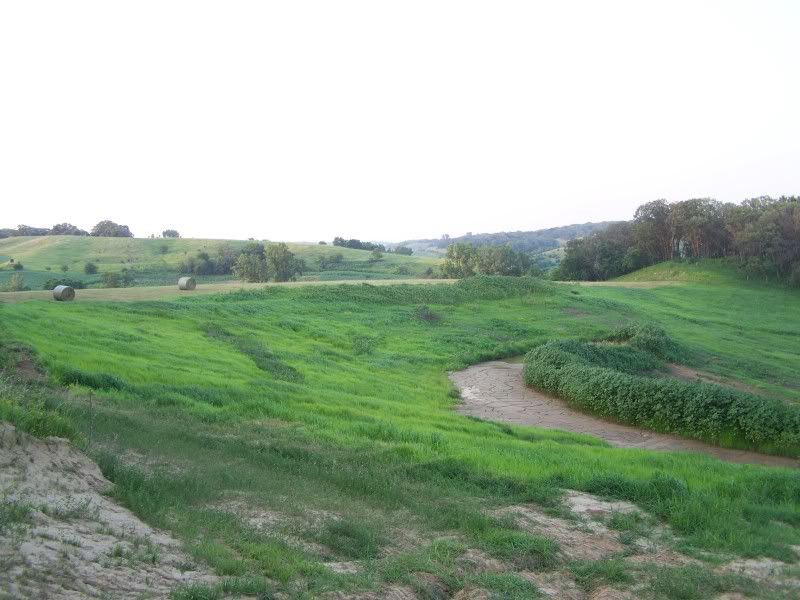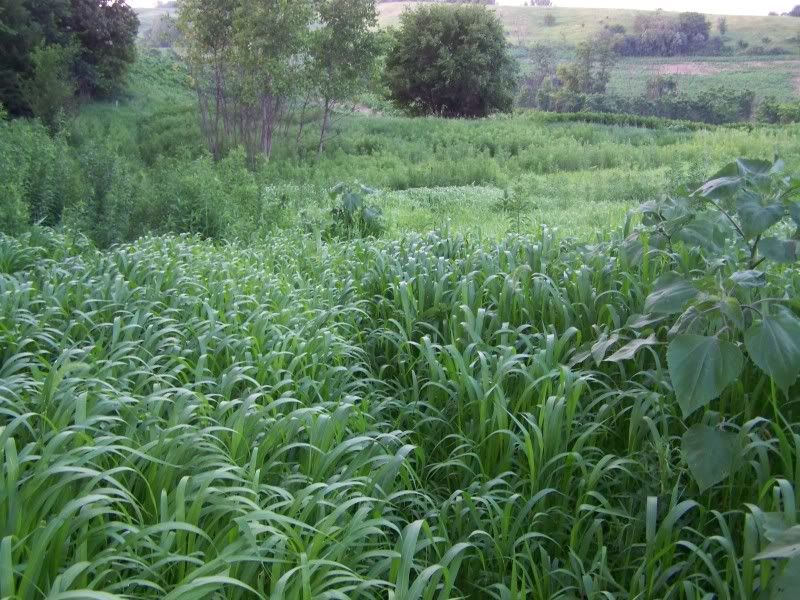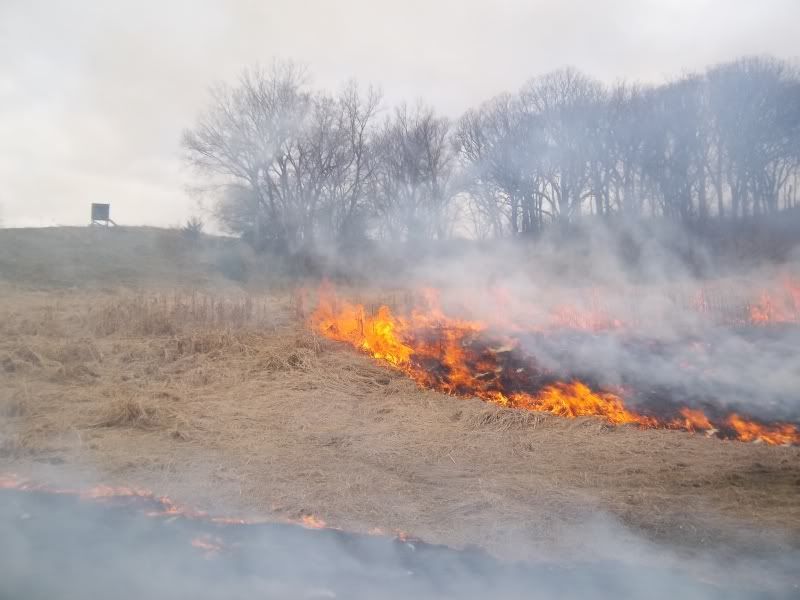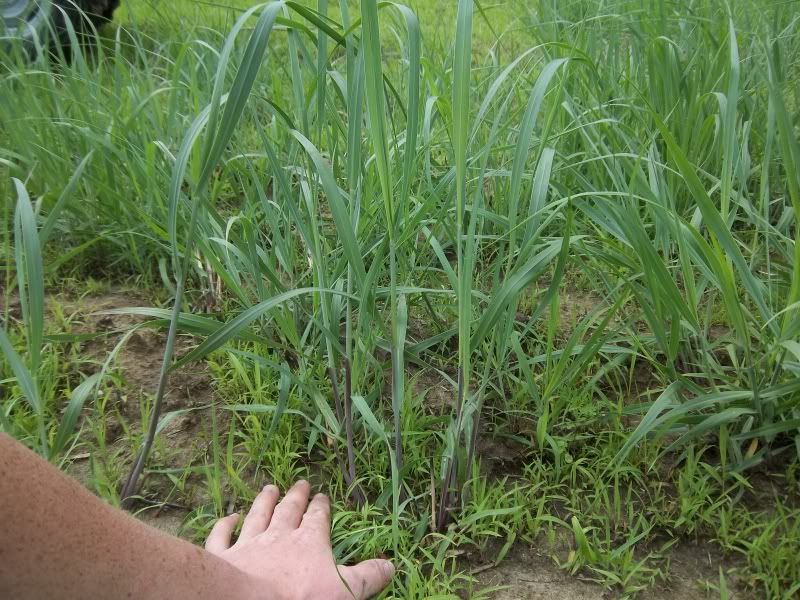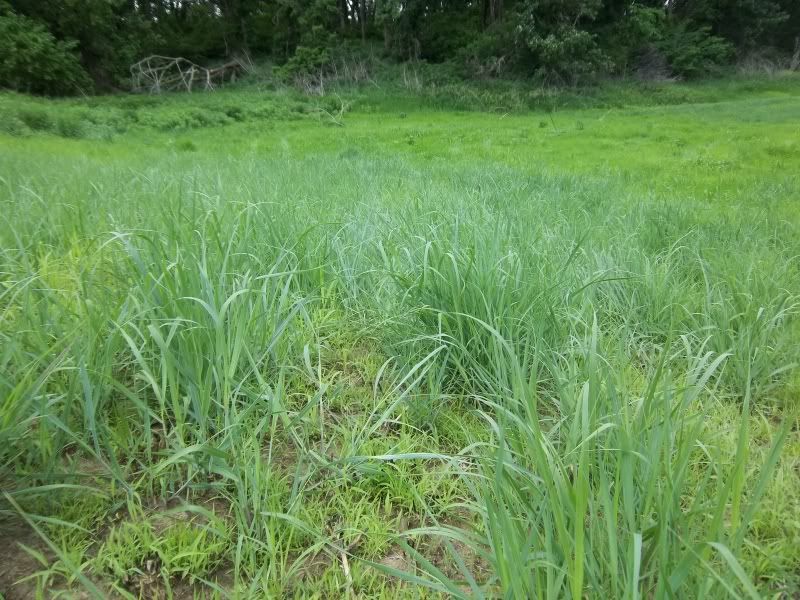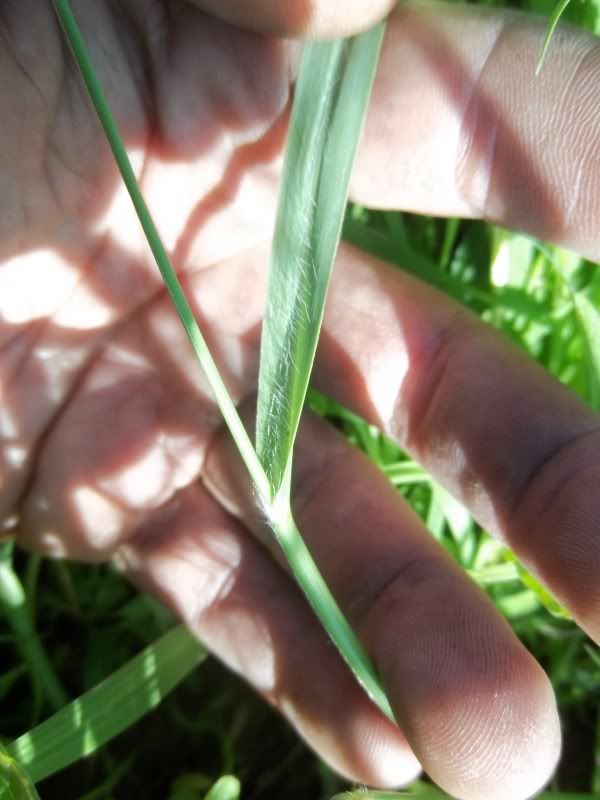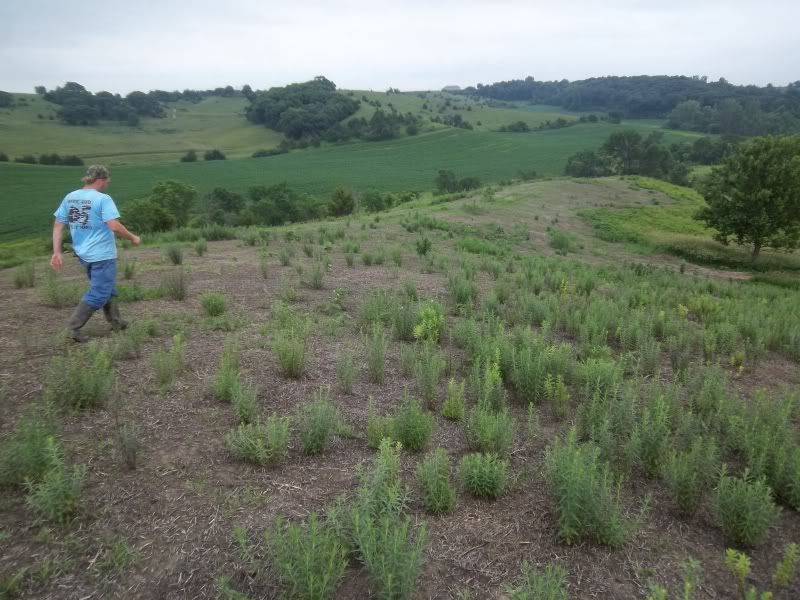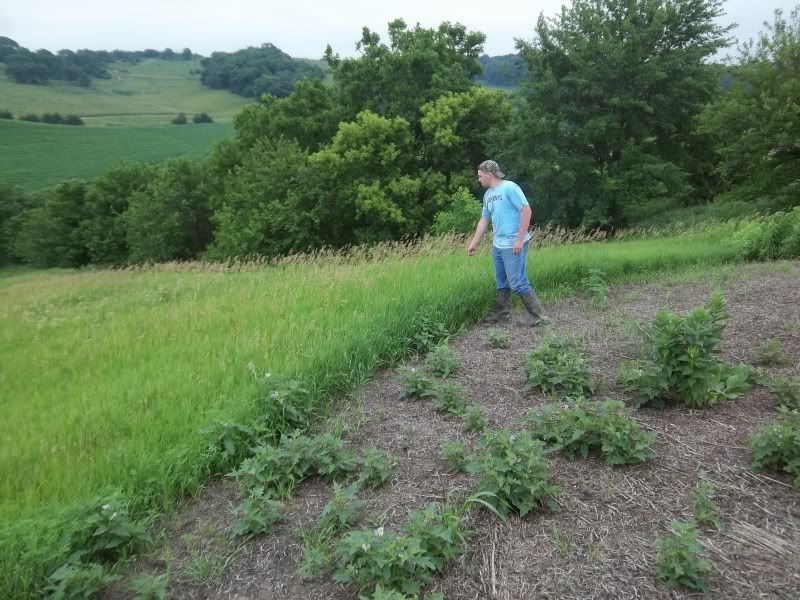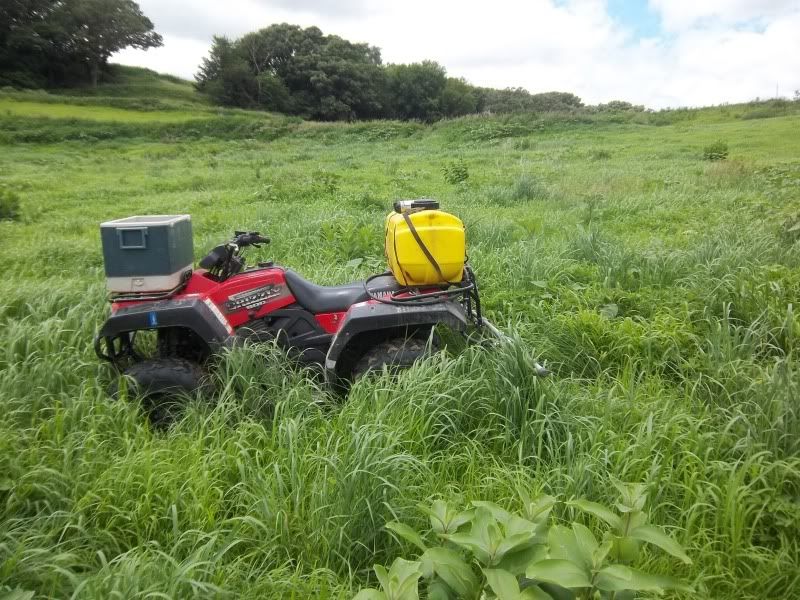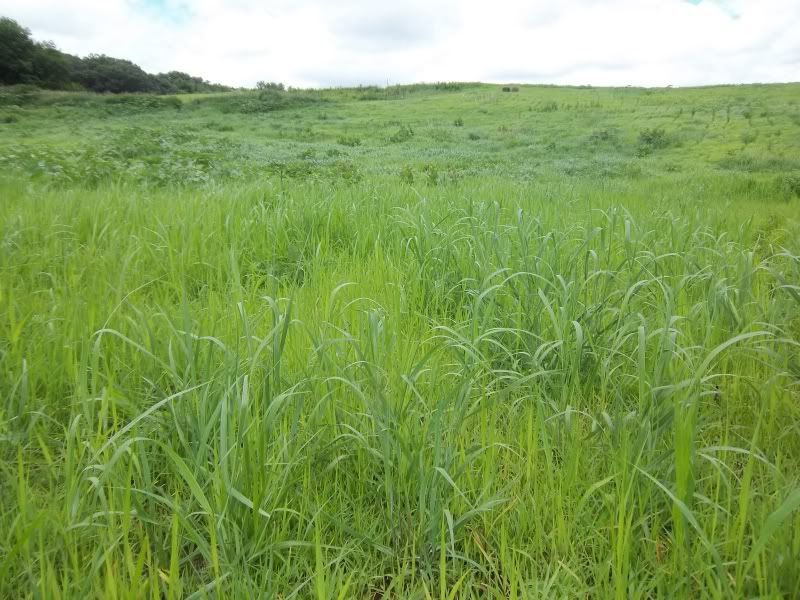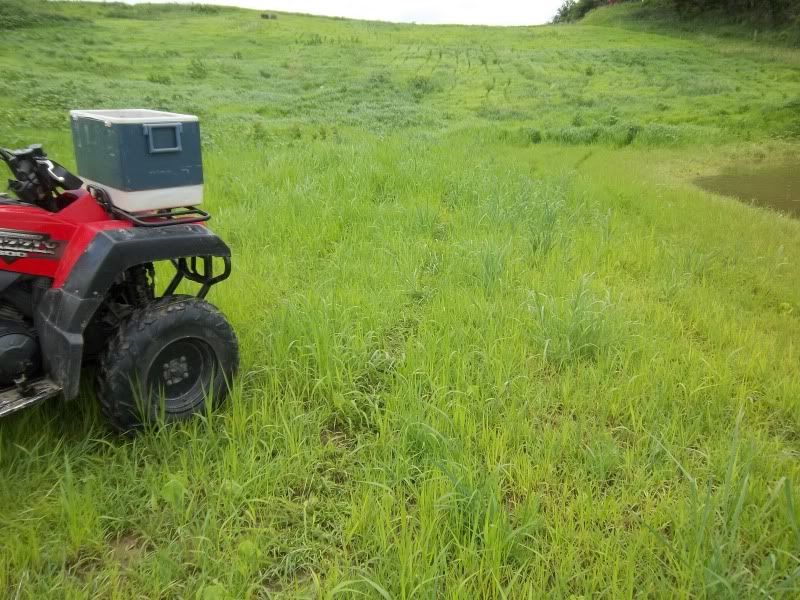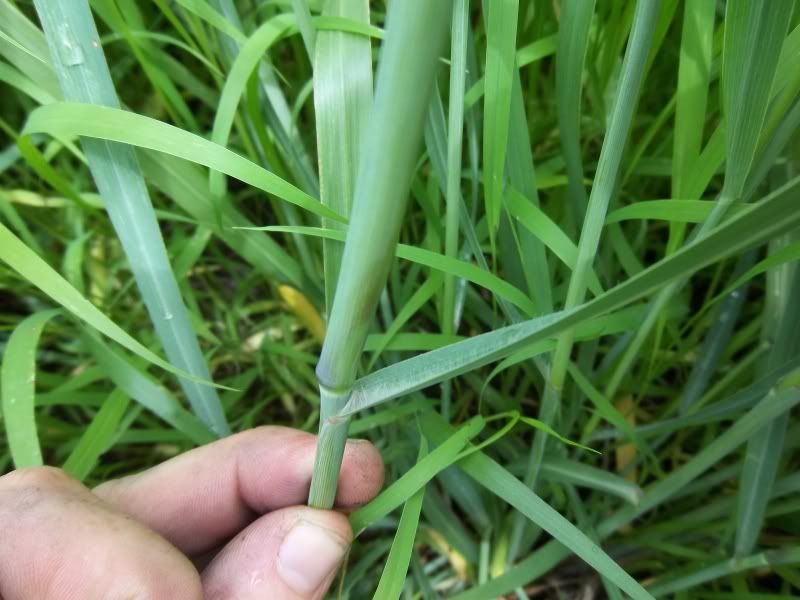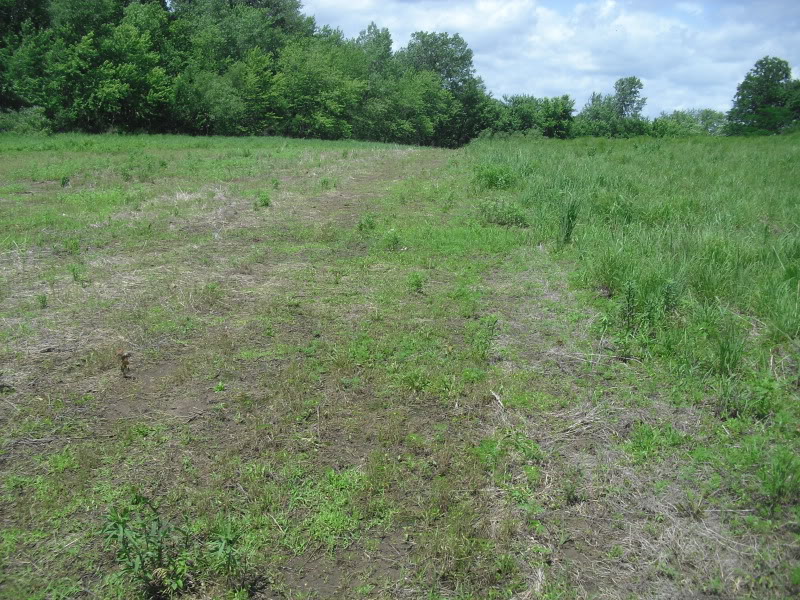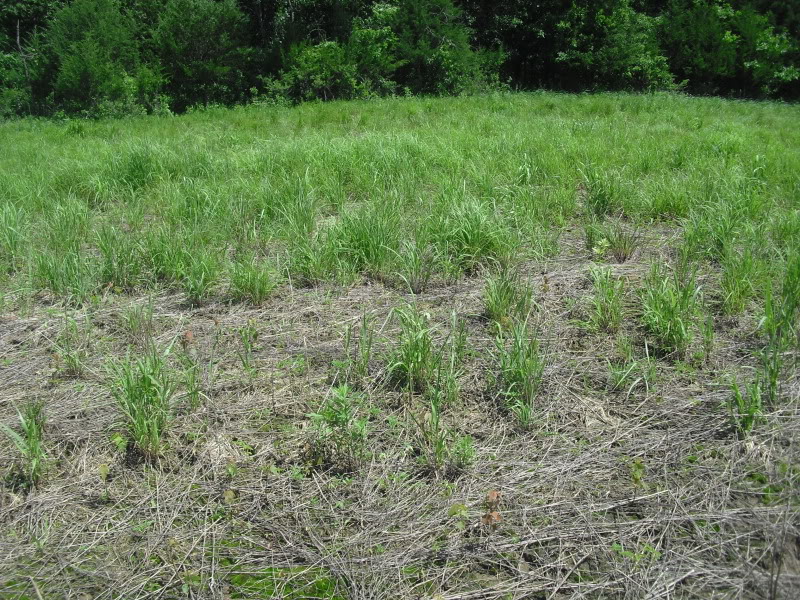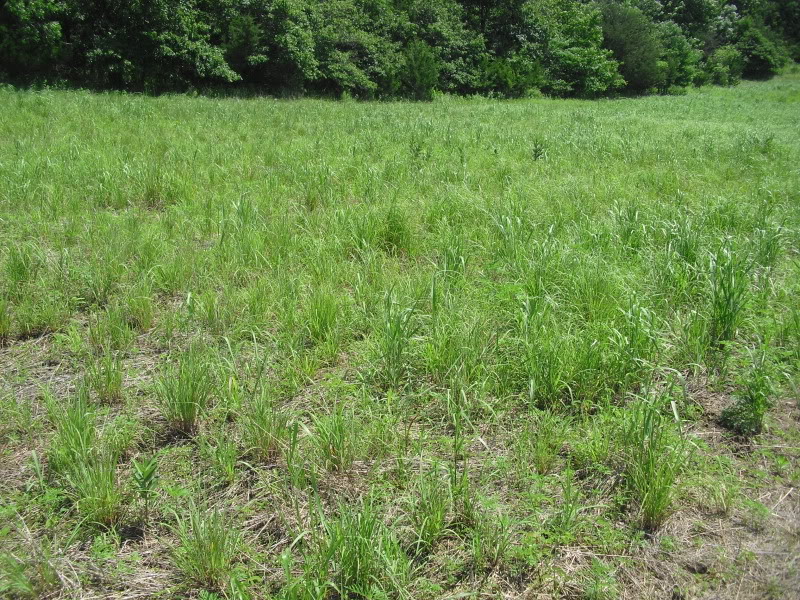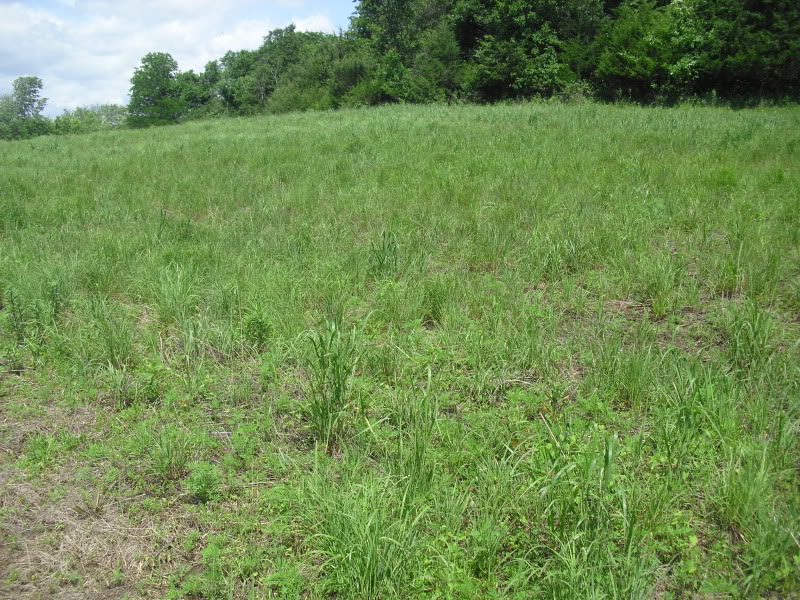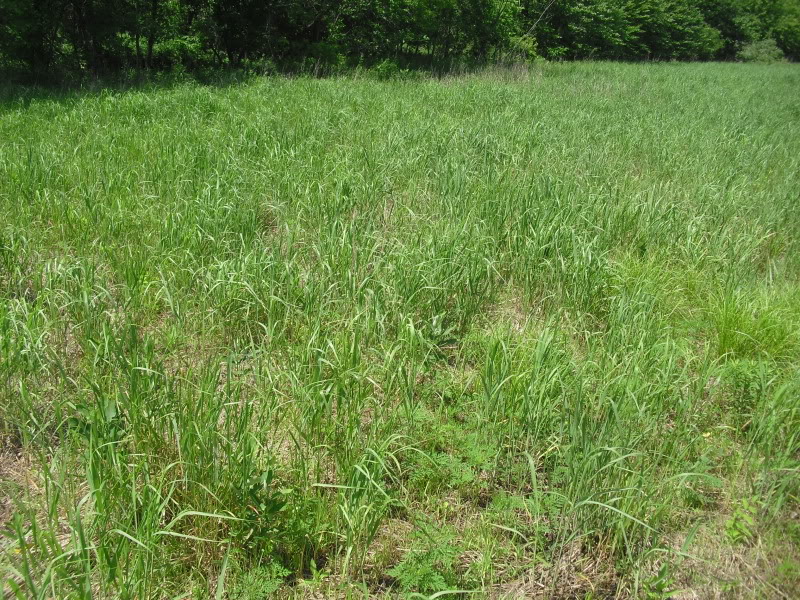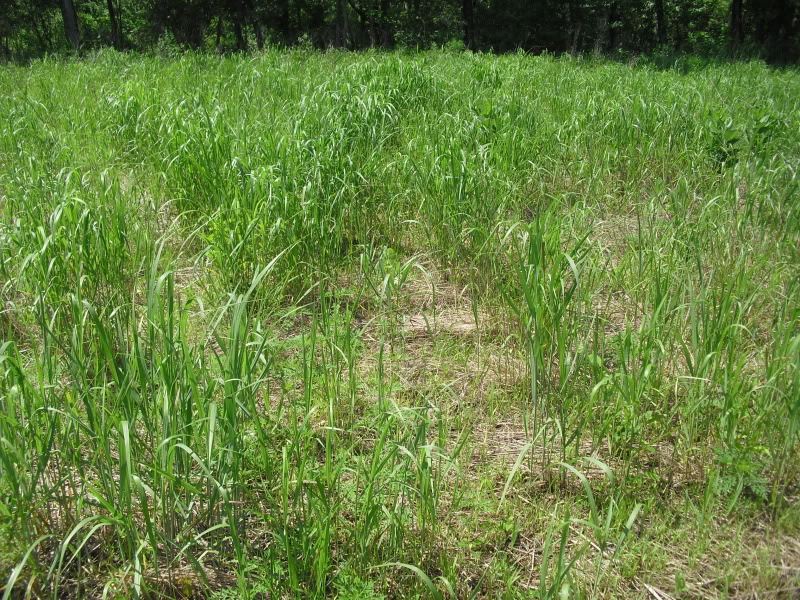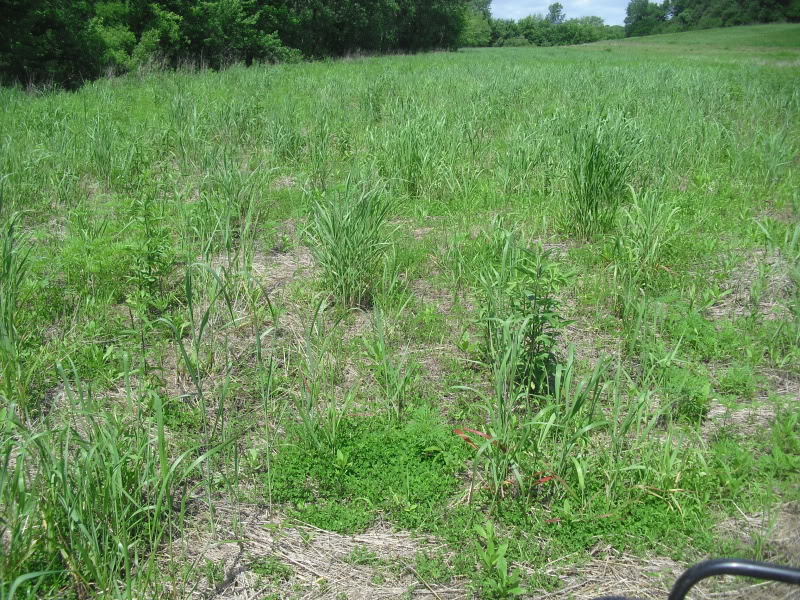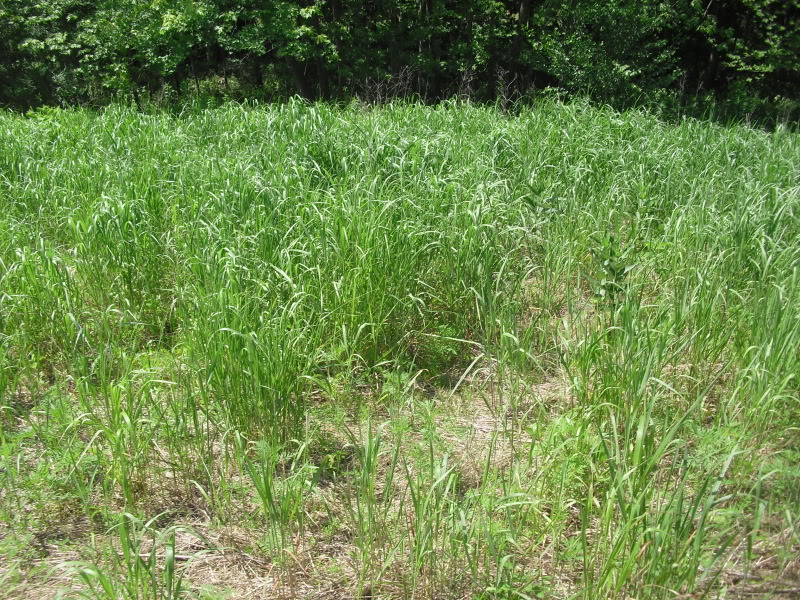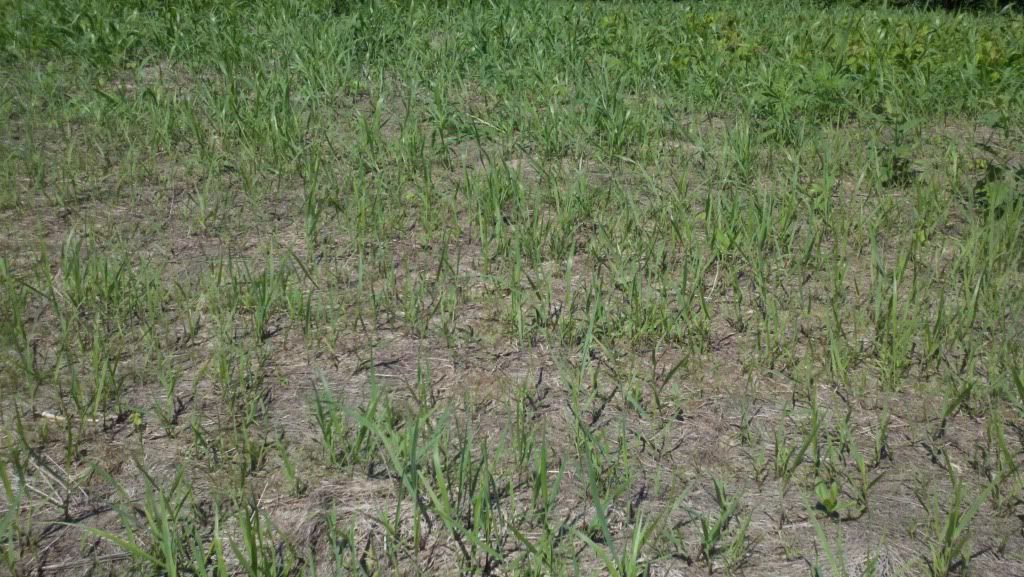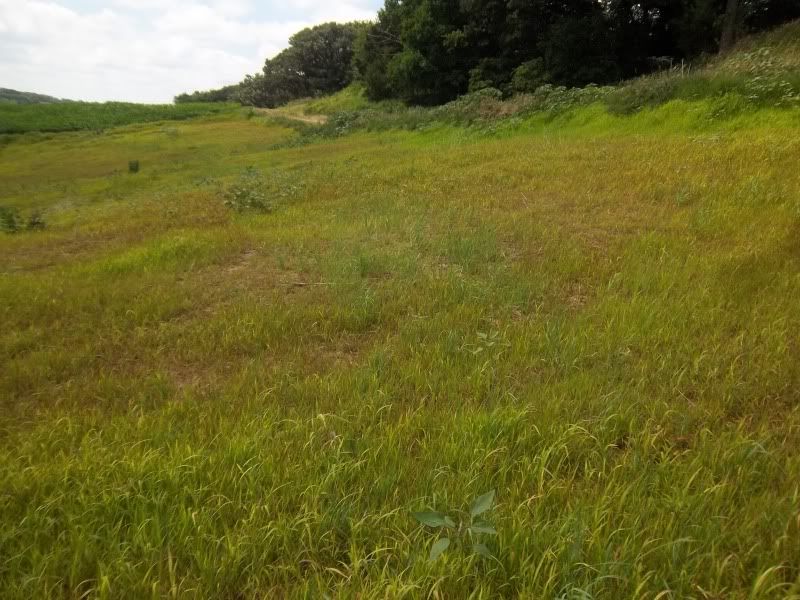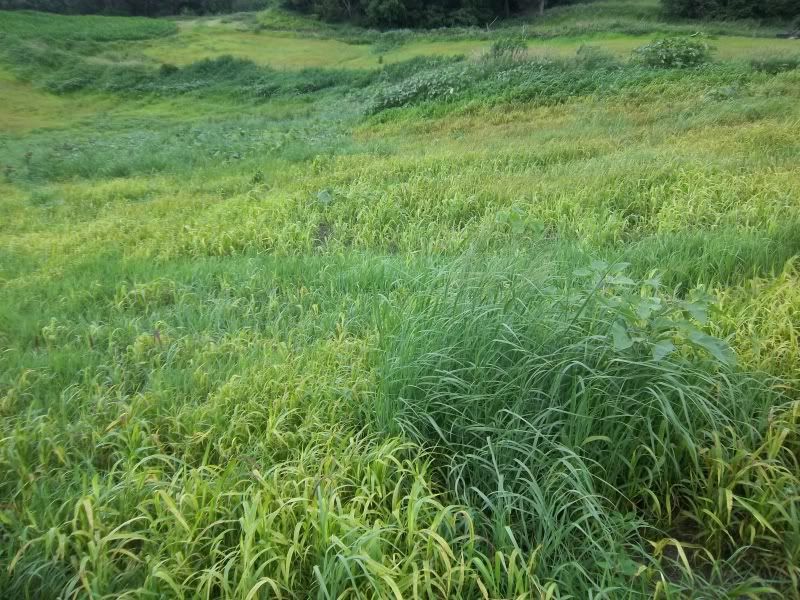dbltree
Super Moderator
June 13th, 2011
Typically we have some 100 degree days here in SE Iowa, hot humid days and nights when you can almost hear the corn grow but I can't remember the last time it was that warm? Four years in a row of abnormally wet cool spring and summer weather, the kind of weather that cool season grasses love but warm season grasses do not.
That being said, NWSG seedling emergence and subsequent growth is painfully slow during cool years and especially so on clay soils that stay cooler then normal due to non-stop rainfall. Even in a good year native grass grows down and not up at first and depending on weed control little or no growth may be obvious the first season. This always leads us to presume the worst and fools us into believing the seeding failed.
The second year usually surprises many with flush of new growth and such is the case with a small stand frost seeded in late winter 2010...by late summer there seemed hardly a switch plant to be found. This year it's popping up everywhere....

Lot's of forbs mixed in but the original fall treatment with Oust and gly has pretty well nuked any CSG
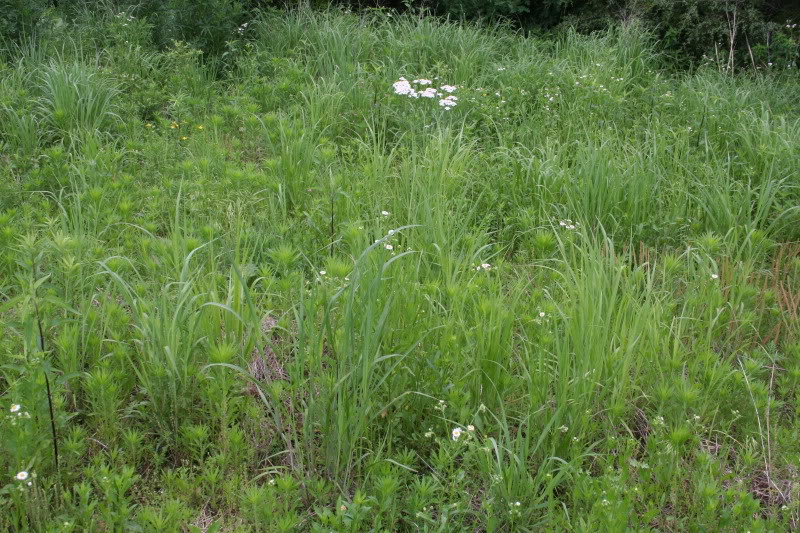
Growth is still slower then normal and plants vary drastically in height
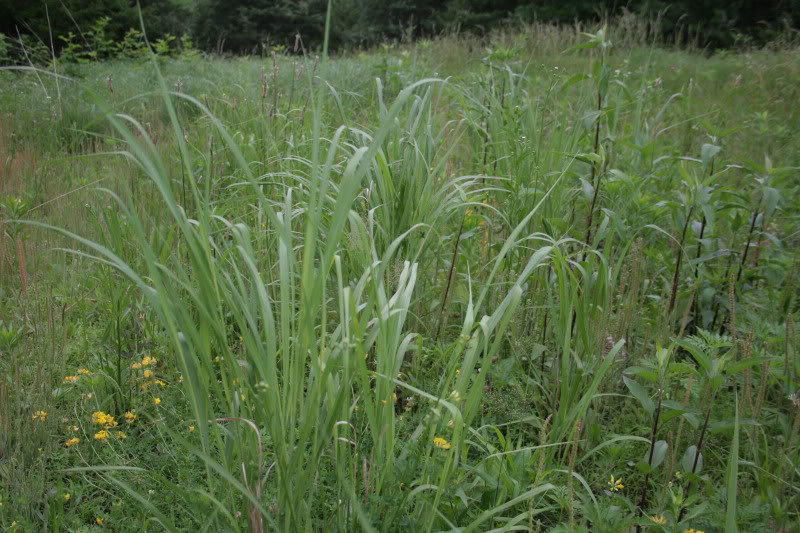
Big Bluestem

Switchgrass plant in front, Big Blue in back
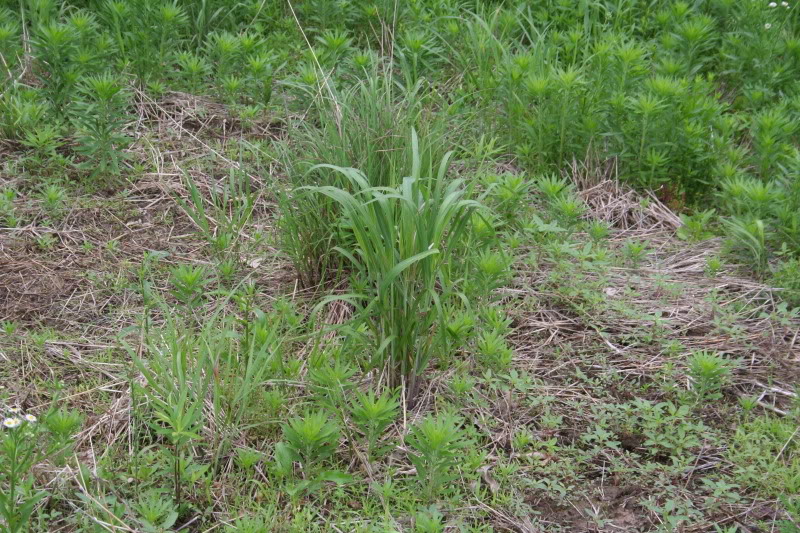
Those with light loamy/sandy soils will find that it warms quicker and quickly leachs water allowing it to stay warm and will most likely see a marked difference in NWSG emergence and growth....
Typically we have some 100 degree days here in SE Iowa, hot humid days and nights when you can almost hear the corn grow but I can't remember the last time it was that warm? Four years in a row of abnormally wet cool spring and summer weather, the kind of weather that cool season grasses love but warm season grasses do not.
That being said, NWSG seedling emergence and subsequent growth is painfully slow during cool years and especially so on clay soils that stay cooler then normal due to non-stop rainfall. Even in a good year native grass grows down and not up at first and depending on weed control little or no growth may be obvious the first season. This always leads us to presume the worst and fools us into believing the seeding failed.
The second year usually surprises many with flush of new growth and such is the case with a small stand frost seeded in late winter 2010...by late summer there seemed hardly a switch plant to be found. This year it's popping up everywhere....

Lot's of forbs mixed in but the original fall treatment with Oust and gly has pretty well nuked any CSG

Growth is still slower then normal and plants vary drastically in height

Big Bluestem

Switchgrass plant in front, Big Blue in back

Those with light loamy/sandy soils will find that it warms quicker and quickly leachs water allowing it to stay warm and will most likely see a marked difference in NWSG emergence and growth....


